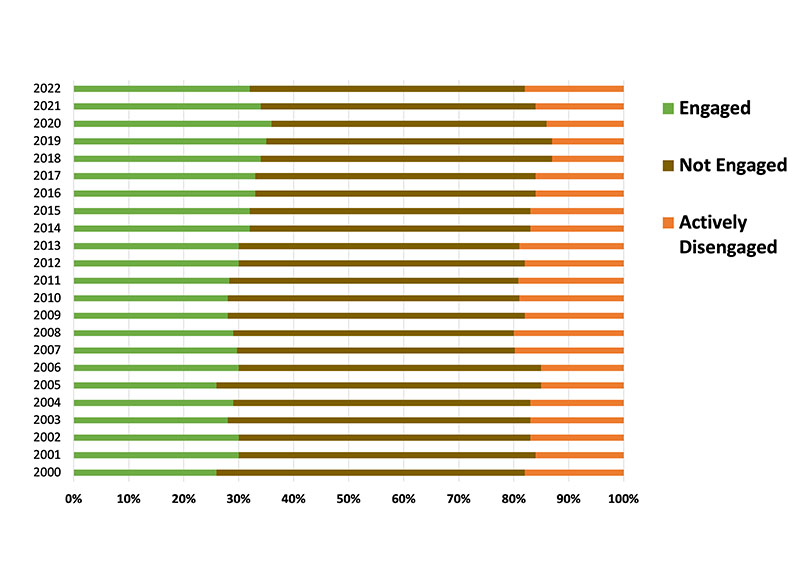Most hiring tools answer whether candidates can and will do the job, but not if they’ll stay. Learn how realistic job previews and motivational-fit interviews can improve retention from day one.
Who Jeopardizes Engagement the Most? Gallup Math Says It’s Managers

Gallup is the gold standard for data, so I’m all ears when Gallup speaks about employee engagement, as it’s their data that is my go-to choice for big-picture engagement information.
Gallup Employee Engagement Data Tells Us Managers Drive Engagement
Given that, consider just a few of these statistics that are sitting on their site, available to us all:
- Managers account for 70% variance in team engagement.
- Two thirds of employees who say their managers focus on their strengths are engaged.
- One in two employees have left a job to get away from their manager.
This opening research list tells us the managers in our companies drive employee engagement.
—–
Further Reading: Did Managers’ Engagement Drop in 2021? Gallup Says “Yes”
—–
Gallup Math for Manager Engagement Checks
Let’s look at another group of findings: Just 10% of people put in manager roles have a strong natural ability to do so. Large companies have about one manager for every 10 employees and of those managers, one in 10 brings strong natural leadership talents to their team.
Using this math, it tells me that just 10 in every 100 employees are working for an adequate manager. Gallup goes onto say:
“Bad managers cost businesses billions of dollars each year, and having too many of them can bring down a company. The only defense against this problem is a good offense, because when companies get these decisions wrong, nothing fixes it.”
So those of us Gallup fans would all agree that we need to do a better job selecting managers. But the bigger issue is how many items on your engagement plan are about developing managers or moving bad ones out.It is easy for an engagement committee to list the usual suspects for improving employee engagement:
Recognition…employees of the month and year, employee appreciation week, company clock at ten years.
Communication…town hall meetings, CEO videos, pump up the company intranet.
Career development…career day, career ladders, brown-bag luncheon series with a speaker from the community college.
Deloitte reports U.S. companies spend $1.53 billion annually on improving engagement, at the same time Gallup tells us employee engagement has hardly budged in the past 20 years. About one-third of our employees were engaged in 2000, about the same are engaged now.

Recognition and Coaching Must Be Done at the Manager Level for Improved Engagement
How hard is it to understand that employees do want recognition, communication, and career coaching…but they want it from their boss? Yet we persist to believe one-size-fits-all programs are worthy substitutes for our managers performing their jobs. So there is no mystery why Gallup’s research and chart above show that employee engagement has been stuck for 20 years and we have flushed billions of dollars trying to improve it. Candidly, it’s not that complicated.
—–
Further Reading: Seven Proofs Managers Drive Retention, Not HR
—–
Stay Interviews are Proven to Build Trust Between Managers and Employees
Stay Interviews training provides basic skills involving asking, probing, and taking notes, which supervisors put into practice immediately starting the day after training so there is no drop-off time between learning and application. Supervisors don’t have to recall what they learned because they are immediately applying what they learned.
Leaders on all levels drive employee engagement and employee retention. The single skill leaders need to improve both is to build trust. Stay Interviews drive leaders to build trust because they focus on employees’ needs today versus overall organizational needs for tomorrow. Listening, probing, and note-taking are essential for identifying employees’ greatest needs and addressing them…all to build that higher level of trust we need to retain and engage the employees we depend on for productivity and profits.
—–
Looking for new ideas proven to improve your retention and engagement but not sure where to start or how to convince your executives? Write me: DFinnegan@C-SuiteAnalytics.com or connect with me to have a one-on-one conversation on ways you can get started today on your journey to cut turnover.
—–



